Painting by numbers is a great way to spend some time engaging in an artistic hobby that also allows you to relax and enjoy the time that you spend painting. It is one of the most popular arts and crafts hobbies across the whole world and loved by many for its extraordinary charms. however, doing paint by numbers is pretty straight forward, there are many tips and tricks that will help you take your paint by numbers art to the next level.
We hope these 15 tips help you get better at painting by numbers and increase your enjoyment of the hobby.
Lets get on with paint by number Tips
-
GETTING RID OF THE CREASES
If your paint by numbers canvas gets creased, don’t worry, this is a pretty normal thing given the material of the canvas. While there are other ways of getting rid of the creases, a sure way to get the creases out is to iron the canvas right side down (Make sure not to use too much water on the canvas as it may smudge the numbers printed on the canvas.)
-
COVER YOUR WORKING SPACE WITH NEWSPAPER OR PLASTIC
Paint by numbers is not a messy hobby in itself, but it never hurt anyone to be careful. Covering your working surface will be a great help in case you spill water and for keeping the paintbrushes on the surface when switching between numbers.

-
GOING FROM TOP TO BOTTOM
Some painters face the dilemma of a smudged painting and cannot explain what the issue is. This can be a result of painting without a pattern. It is best to go from the top of the canvas to the bottom to ensure that you are not going to smudge your painting, although some people suggest going number by number, starting from the biggest to smallest and waiting for each to dry before starting the next.
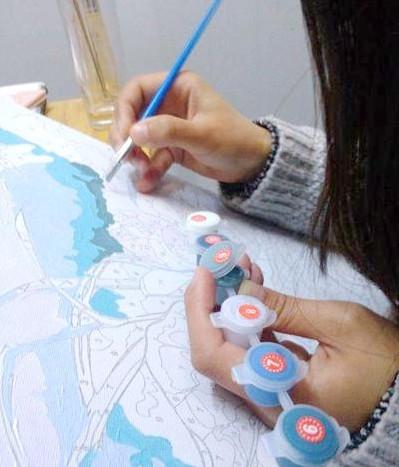
-
USE FLOW-IMPROVER TO THIN OUT PAINT – WATER WORKS TOO
Acrylic paint is bound to get thicker as it dries and a lot of painters find it difficult to work with the paints when this happens. A simple solution to this is to put a few drops of water into your paint until it reaches the required consistency, but if that doesn’t work out you can also use paint thinner to get the job done. Voila! The paint is now ready to be used.

-
USE A FRAMED CANVAS TO ELIMINATE CREASES
This is an excellent tip, especially for beginners. The frame around the canvas ensure that it stays tight and does not get creased. It also helps the canvas stay put, and allows you to focus more of your energy into working on the painting itself.
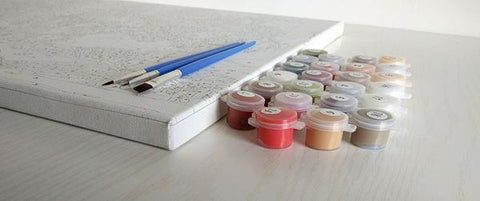
-
USE ACRYLIC SEALANT TO KEEP DUST OFF
Acrylic paint sealant will not only give your painting a beautiful finish of your choice, but it will also keep dust and grime from sticking onto the painting and increase the life of the painting. Make sure to wait at least a week after the painting is done to make sure it is completely dry, even from under the surface.
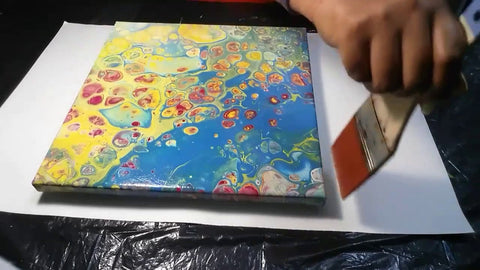
-
CLEAN YOUR BRUSHES AS YOU GO
Acrylic paint is thick and dries off pretty quickly, which makes it a huge pain to get off of brushes. Make sure all your brushes are completely clean of the paint as soon as you are done using them, so that the paint does not get stuck to them. But if it does, the next tip will be very useful for you.
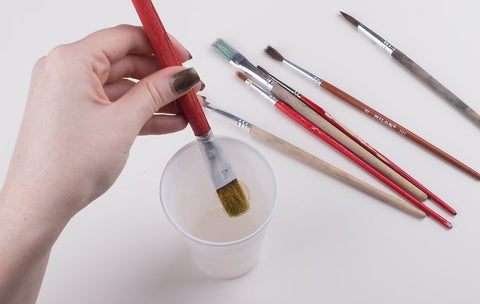
-
USE PAINT THINNER TO CLEAN BRUSHES
If paint gets stuck to your paintbrushes and dries out, the brushes can get clogged. To clean out your brush, pour the paint thinner in a container and soak the brushes for half an hour to an hour. Take them out and wash them with water to get rid of the thinner. Your brush should be good as new.
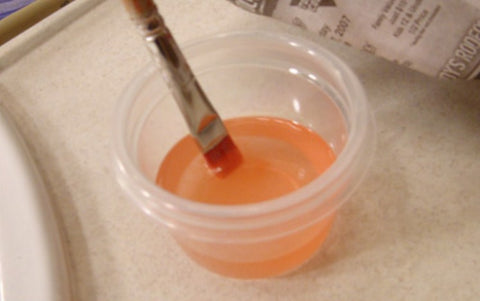
-
USE WHITE PAINT TO FIX MISTAKES
White paint is your best friend in case you make a mistake and fill in the wrong color in the wrong box or if your colors or to clean out the edges of the painting. It can also be used to enhance the colors by applying a coat of white paint under the paint.
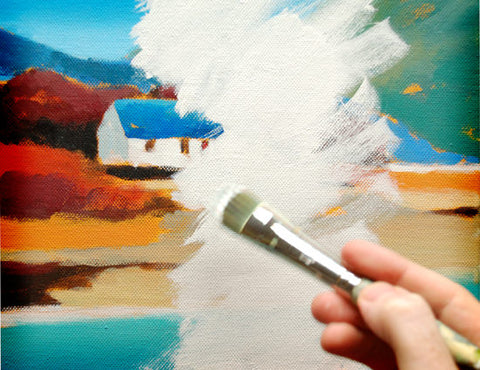
-
USE LESS PAINT THAN YOU THINK YOU NEED
A lot of the times, the spaces to be filled in are very small and intricate, and using more paint than you require can end up messing up your painting. Take small amounts and add as you go instead of taking a lot of paint together.

-
CLOSE PAINT POTS WHEN NOT IN USE
As mentioned before, acrylic paint can dry out easily. So be sure to close the lids of your paint pots when they are not in use to keep them fresh longer.

-
USE LEFTOVER PAINTS FOR OTHER PROJECTS
Use the leftover paints from your paint by number kits to create fun projects such as abstract painting or make painted birthday cards for your loved ones. The possibilities are endless.

-
USE VARNISH TO GIVE A FINISH TO YOUR PAINTING
The uses of paint varnish have already been discussed, but using paint varnish will increase the aesthetic quality of your painting. It will be more pleasing to look at, and you have many options to choose from.
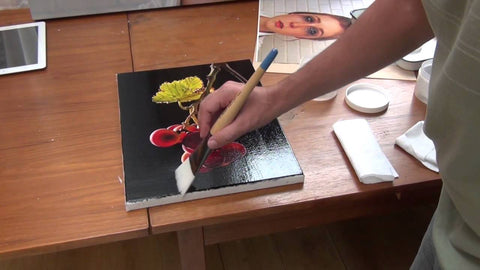
-
TAKE A PHOTOGRAPH OF THE CANVAS
A lot of the time, once the canvas is painted over, it is hard to remember where certain numbers end. This can be a problem if you want to go through a second coat or clean up the edges of the painting. Taking a photograph of the canvas, sans paint will help you go back to it for reference in case of any problems.
-
HAVE FUN WITH YOUR PROJECT
Last but not least, a great tip that actually needs to be reinforced time and again is to try to have as much fun while creating your painting by numbers as possible. That is the whole purpose of the craft, and will make you feel much better at the end of every painting session, while improving your painting skills.
Some Additional Tips:
- Use an easel with storage capacity to store your painting tools and supplies. This will not only be useful in organizing your paints and brushes but also help you in making your painting conveniently and your artwork look as accurate as possible due to the flat and properly plane surface of the easel.
- Dilute the water-soluble acrylic colors to paint the areas with lighter textures. Lighter paint is ideal for reflections. The contrast of light and bright colors will create super cool effects on your artwork and give it the feel of a masterpiece. Just make sure to use an appropriate amount of water, which should neither be too less nor too much.
- Paint smaller areas on the canvas first because they are a bit hard to fill with paint and require precise work. If you try to paint smaller sections after painting the big ones, not only you will find smaller areas to be difficult to work with, but there is a higher chance you will end up smudging the paint from the big sections while working on the small ones.
Happy Painting!
Follow these handy tips to experience numeral painting like never before. You may have done painting with numbers before, but not in a way like this. We assure you that our tips will change the game of your painting.

![Paint by Numbers Tips [Updated 2024]](http://paintbynumbershome.com/cdn/shop/articles/download_3_360x_360x_1170fd95-0943-4310-813f-3536a7611124.jpg?v=1651148305&width=1100)

7 comments
Idk about anyone else but I get the feeling ironing the canvas just isn’t a good idea. Now I really don’t know anything, but I get the feeling that It would just be a no no for me and could mess things up for the entire picture if I even tried. I would not be okay with ironing the canvas unless someone else has done it and can vouch for the fact that it is somehow legit.
So if anyone out there has actually done that, can you consider commenting back underneath. It would really be very helpful as I would know that the technique is something I can try and that other people can vouch for it. I really need it to be straightened out sometimes, but I am also not going to ruin the canvas over some sort of experiment to see if things work. Please someone comment back, I really want to know how to do this and IF i should do this.
Recently I have come to be quite irritated by all these life hacks and tips and tricks which keep popping up on my Facebook feed. These so-called hacks are simply made in order to gain attention from the view so that these pages can get better viewerships. I am not going to name any name, but its stuff like this which have really put me off from reading anything of the sort. Any sort of tips and tricks articles or videos are just plain annoying for me now and I close them before I even give them a chance.
However, when I finally came down to reading this one, I must admit, that bit of white to cover up mistakes really does help. As someone who has a naturally shakey hand, I tend to slip up a little bit at times and in turn mess things up. The white paint idea as an eraser is great, I can simply touch up whatever mistakes I make and move on rather than wallowing in the mistake. Thanks for the help guys, all the best.